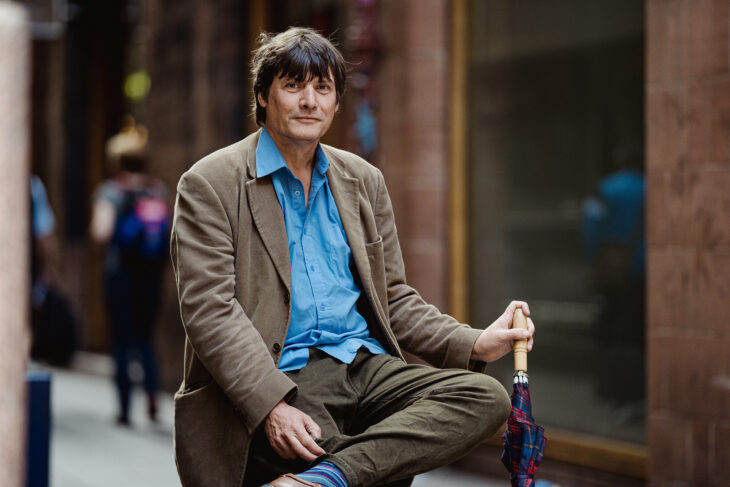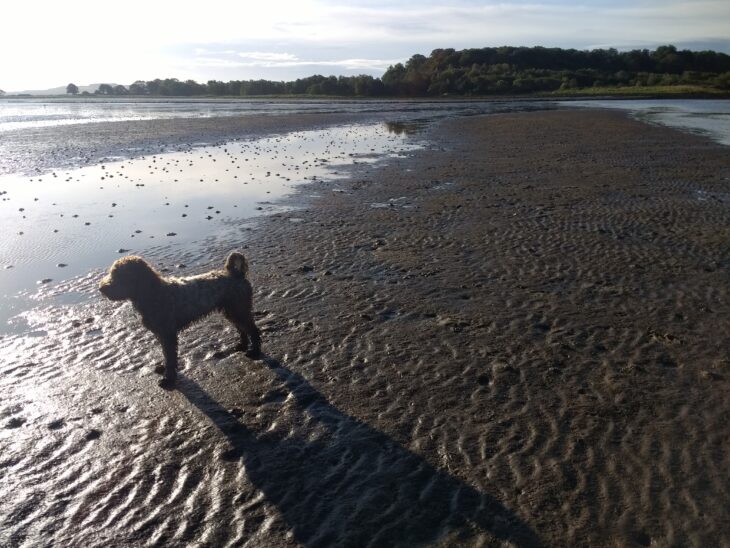Wellbeing and walking: finding new routes
It’s widely accepted that interacting with nature can improve your mental health. In this guest article, Graham Morgan describes his personal experiences of this to mark World Mental Health Day 2019.
Do you experience sadness, or that white panic when your thoughts will not stay still? I was at my loneliest, saddest and most frantic about ten years ago, after I left my wife, when my son decided he no longer wanted contact with me. I remember those years with a sort of horror. The silent rooms of my house encouraged my thoughts to whirl round and round, drowning out my logic and sense of perspective; sending me to terrible places which I hope I never have to return to again.
I had better introduce myself to you. My name is Graham Morgan, I currently work for the Mental Welfare Commission for Scotland but for 20 years lived and worked in the Highlands with HUG (action for mental health).

I have a diagnosis of schizophrenia and every so often find myself in hospital being treated, but it is the times of recovery that I want to talk about, the times that I seek solace from the world around me.
As I said, I am talking about those loud thoughts when I was trying to rebuild my life after the collapse of my marriage. For me, friends and ultimately my love for my new partner, Wendy, were the key things that gave me pleasure in life again but so, importantly, was the fresh air and the natural environment. It made a huge difference too.
I remember when I lived in my tiny house in Nairn, I would escape the sadness and walk and walk on East Beach; the wide, wide, skies; the views across the Firth to the Black Isle; occasionally a dolphin sighted out at the sea. It made such a difference. The crows and seabirds, the sand bustling, sometimes rushing, along the beach in the wind. Those winter days when the beach was frozen solid and seemed incongruous; those summer days when I lay against the sand dunes looking at pied wagtails among the marram grass, hearing the occasional family, the occasional dog. Being outside soothed me.
When I started walking in one of my bouts of sadness, initially my mind would be racing, my body tense but as I walked, my muscles softened, became smoother, my thoughts slowed down, my mood changed for the better.
Equally sitting on the bench where the peat brown river Nairn curves and makes its own sandy bit of beach was wonderful; seeing the occasional splash from a trout, the slow awkward stalk of a heron, the bustle of the rookery in the trees on the opposite bank; it did wonders for me! As did, of an evening, walking to the harbor mouth and sitting at the very end of it; sitting down, watching the dark brown water of the river mix with the grey green of the Moray Firth, seeing the sun set to the west; lighting up the sky, the beach, the water.
I am not an academic but it would take very little effort to see that being in the natural world can improve our wellbeing and sooth some of our darker thoughts, I would never say it is the answer to sadness but it can make a difference, on those days when we still have the energy to venture into the fresh air.
In my work with HUG (action for mental health) we worked with another charity called N4H, an organisation that takes people out into nature to feel the lift that it can give, the tentative conversation with another person while walking in the woods, the sound of a river, the camaraderie of drinking tea and eating flapjacks around a fire at the end of a walk. If you need evidence of the benefits of such things to people like me with a mental illness; do contact them.

Nowadays I live in Cardross in Argyll. For the first time in my adult life I have a dog to look after. I think I was in one of my happiest moods last year, coming back from walking Dash the dog in the pouring rain, back to a warm house and Dash leaping everywhere with the joy of being alive. It is so long since I have taken pleasure in the wind and the rain. I used to be a yacht skipper; you would think I would have remembered the excitement of being out at sea in a high wind on a blustery rainy day! But somehow I forgot. Dash gets me out everyday. Walking round Ardmore is my standard walk and I so love it when I see seals or deer, hear the curlews and the oystercatchers, watch the seasons change; the flowers come and go; the path buzz with bees and fluttering butterflies, to be lined with ice or covered in puddles; the mud flats beckoning to be walked on at low tide.
It is giving me back so much joy, my weight is getting closer to something normal, my breath no longer rasps when I walk up the hill to home and Dash the dog; he makes me laugh; gives me love and joy.
I still find myself in treatment every now and again, I still experience depression and anxiety and drink too much, but my life is also full. Finding myself with a new family makes all the difference, as does my work and my wonderful community psychiatric nurse. But so does that daily walk; the chance to escape the pressure of ‘whatever’. To sit on a rock after idly searching for sea-glass; listening to the lap of the water, smelling the warm pungent seaweed, feeling the fresh air on my face. Sometimes it feels like bliss.
Graham Morgan is the Author of Start published by Fledgling Press; a memoir of love, the natural world and compulsory treatment for mental illness. He has an MBE for services to mental health and has been revitalized by his Partner, Wendy and her young twins Charlotte and James and, of course, Dash the dog and the fresh air of Ardmore.
Help protect Scotland’s wildlife
Our work to save Scotland’s wildlife is made possible thanks to the generosity of our members and supporters.
Join today from just £3 a month to help protect the species you love.
Preface
It’s widely accepted that interacting with nature can improve your mental health. In this guest article, Graham Morgan describes his personal experiences of this to mark World Mental Health Day …
